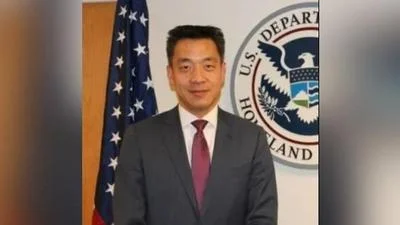City of Yorkville Unified Development Ordinance Advisory Committee met May 19.
Here are the minutes provided by the committee:
Meeting Called to Order
The meeting was called to order at 6:30pm by Chairman Chris Funkhouser and a quorum was established.
Roll Call & Establishment of Quorum
Committee Members:
Chris Funkhouser, Chairman/Alderman/in-person
Jeff Olson, PZC Chairman/remote attendance
Deborah Horaz, PZC Member/remote attendance
Dan Transier, Alderman/remote attendance
David Schultz, Engineer-HR Green/in-person
Others Present:
Krysti Barksdale-Noble, Community Development Director/remote attendance
Jason Engberg, Senior Planner/in-person
Previous Meeting Minutes March 31, 2022
The minutes were approved as presented.
Citizens Comments None
1. Introduction
Mr. Engberg said the meeting would be an overview of Chapter 7. Staff and engineering have reviewed the comments and he asked for committee input as well. After Houseal Lavigne updates all the responses, this Committee will review again.
2. Review of Materials
a. Chapter 7: Subdivision Standards and Procedures Discussion
Mr. Engberg shared the updates in a PowerPoint presentation. He said the individual sub-topics in this chapter review how development is subdivided and how roads, bicycle lanes and sidewalks are regulated. This is not in the zoning ordinance now, but is part of the subdivision code, so it has become part of the unified development ordinance.
Following is a summary of consultant updates received and Committee discussion for each sub-section of Chapter 7:
10-7-1 INTENT AND PURPOSE:
No comments
10-7-2 LOTS:
Updates: There are new requirements for landscaping for double frontage lots which can occur, but are discouraged. An update to the ordinance precludes frontage along major thoroughfares or collectors. The Comp Plan defines all existing and future roadway classifications. If a major development comes in, there will be more collector streets rather than fronting on a major road.
Committee Discussion: Staff looked at other UDO's, including Montgomery's which was just updated and includes many best practices. Montgomery has required east/west access of roads and orienting houses to be south-facing to utilize solar power. Mr. Schultz said it should be a recommendation, but not requirement for Yorkville. Mr. Funkhouser commented that the idea opposes design intent of streets that should be located according to features and topography, to which other committee members agreed. Staff will consider language to promote solar power generation. It was agreed that more flexibility is needed for whoever makes the determination for a cluster development and the definition of a cluster. Also needing clarification is the intent of the right angles requirement.
Discussing double frontage lots, Mr. Funkhouser said one provision states that those lots can be extra deep and create a buffer. He cautioned against extra depth and recommended the buffer be an outlot. This could result in issues of HOA management/maintenance vs. homeowner maintenance because a transition yard is required. The landscaping would be maintained by the HOA. Ms. Noble noted this is how some of the Grande Reserve lots are designed. Also questioned was who would maintain easements within a subdivision.
Access to streets: Ms. Noble said staff recommends language stating that all lots shall have access to public streets. She said there is a townhome development in Kendall Marketplace that has private roads, but they have connectivity to public streets.
Access fronting to thoroughfares/collector streets: there are requirements for separation and Mr. Funkhouser asked if this is for primary entrances and the type of inclusions. At this time, the code is written for all entrances and could include full access.
Distance between access points: Mr. Funkhouser asked if there are standards based on right in/right out traffic studies. Ms. Noble said there are standard specifications which will be detailed in an upcoming version of the code. The typical 200 feet between driveways and corner intersections will be included.
10-7-3 STREET DESIGN AND IMPROVEMENTS:
Updates: Original block lengths were 1,320 feet and the consultants recommend retaining that for nonresidential, but the length should be decreased to 800 feet for residential. This is also a CMAP recommendation to improve connectivity and walkability. A Connectivity Index was added, however, the wording was confusing.
Typically developers put in street stubs and a turnaround for cars should be finished. The consultants updated lengths, widths and improvements for best practices. EEI and staff will meet for clarification.
A new concept suggested was mid-block pedestrian access in the 800-foot residential block. It could be longer if pedestrian ingress/egress is added between blocks. Heartland Circle currently does this. It has several bike trails and multi-use paths in mid-block creating easier access to the park in the center of the development. The committee will consider whether they wish to include.
Cul-de-sacs possibly should be avoided, however, they could be an opportunity to add connectivity.
There is a small amount of language for bike amenities regarding lane width and shared bike lanes that need to be in line with the current standards. Do we want to require them on the streets? Discussion is needed on this section.
Committee Discussion: Mr. Schultz asked the purpose of a Connectivity Index, the standards on which it is based, ranges and how to calculate it. Mr. Engberg will verify with the consultant, but the concept is to insure a good ratio of streets and intersections and to reduce the block length making the street more walkable. Mr. Funkhouser asked what is being accomplished with the block length and index. He is in favor of doing a midblock requirement, but he said 800 feet is not very long for a street and is inefficient. He is more in favor of a good design, whether it be longer blocks, curved or a median in the middle.
Mr. Schultz said 800 feet is too short and might create too much roadway/right-of-way maintenance. Mr. Transier concurred and said more yield and stop signs will be needed and it could generate more accidents. Ms. Horaz agreed. The idea was to create a more walkable environment, said Mr. Engberg. These comments will be forwarded to the consultant. He also suggested creating developer incentives for streets longer than 800 feet.
Mr. Funkhouser asked for a checklist of those incentives.
Ms. Noble said she had concern for increased impervious surfaces because it could impact the total developable area of the site. In an earlier review, the Public Works Director encouraged a trail and sidewalk rather than a sidewalk on each side of the street. Pervious pavers could also be used, said Mr. Olson, however, increased maintenance was cited. Permeable streets would be more flexible if they are wider and would reduce stormwater, Mr. Funkhouser said. Mr. Engberg commented that some communities have bio-swales and no curb instead of grass parkways.
There was brief conversation about street intersections radii and that it must be adequate for fire apparatus. The ideal is 90 degrees and any exceptions should be considered by the zoning administrator. Flexibility was stressed.
Property Lines:
Committee members talked about sidewalks, straight vs. curved and recommended traditional saying the curved ones were awkward and could cause issues for utilities. They agreed corner cuts were OK too, as long as they are traditional. Cul-de-sacs should be able to accommodate fire trucks, plows, etc and Public Works should be consulted. A center island was also recommended for cul-de-sacs, but engineering should be consulted. Islands should be mountable for emergencies and there should be no vegetation that obstructs the view. An island that is wider on one end was also OK with the committee. Straight stubs must have the street built to collector standards. The committee recommended that trails/paths be called shared-use path.
Parkways:
The committee discussed either 5 foot or 7 foot parkways and if there would be adequate room if utilities and light poles were installed there. Ms. Noble noted that ComEd has made requests to put utilities in front yards and not under streets. Ms. Horaz questioned whether a narrower parkway is adequate for trees, however, Mr. Funkhouser said Public Works would prefer that trees not be planted in the parkway.
On-Street Parking:
Mr. Transier asked if all streets must be marked and striped for on-street parking. Most minor streets do not require marking.
Medians:
Landscaping should be required for mountable curbs, but Engineering and the Fire Department should be asked for their opinion before making it standard. If medians are landscaped they should be maintained by HOA's or the development rather than be a city obligation.
https://www.yorkville.il.us/ArchiveCenter/ViewFile/Item/4688





 Alerts Sign-up
Alerts Sign-up